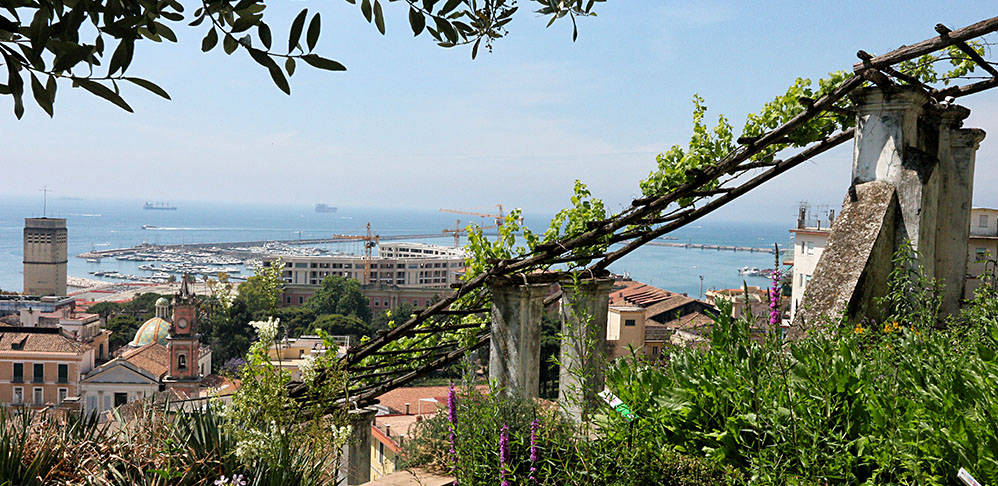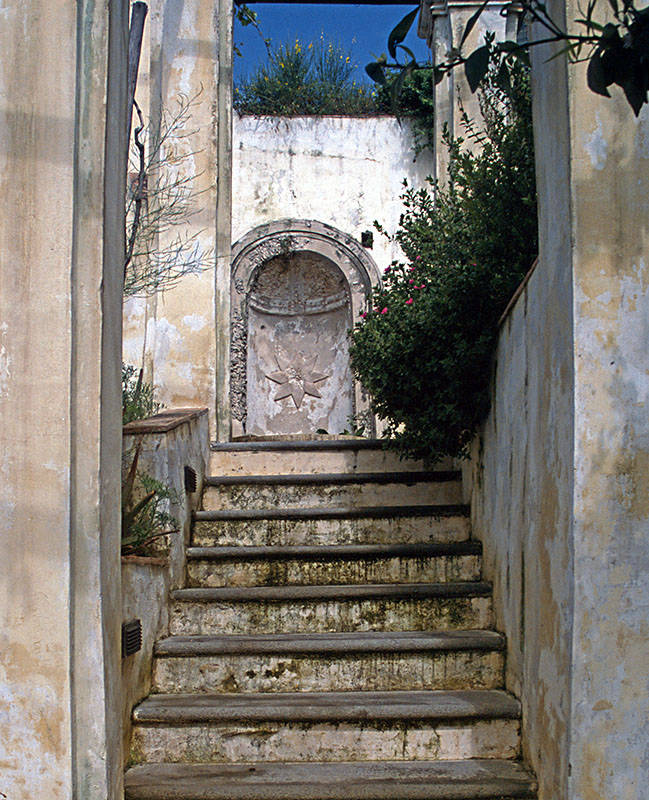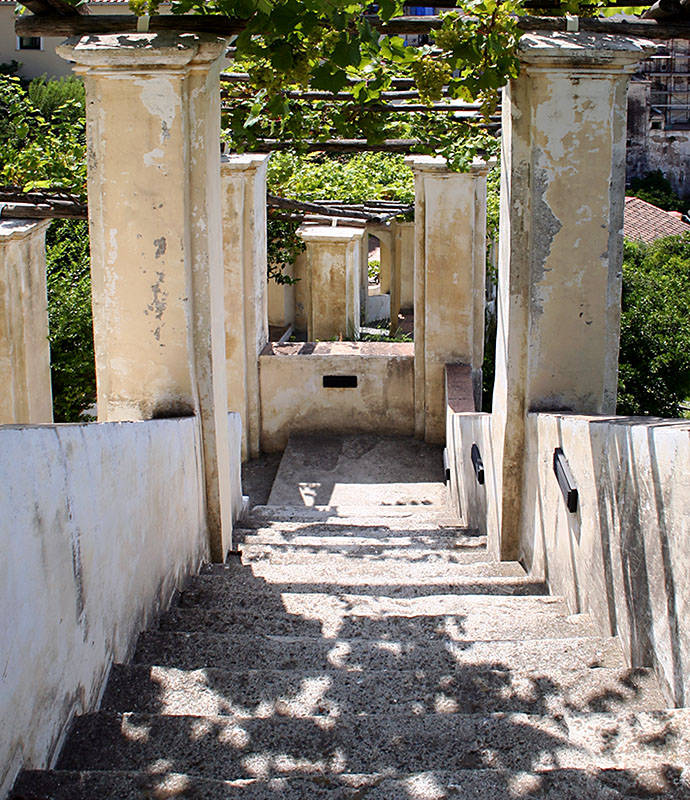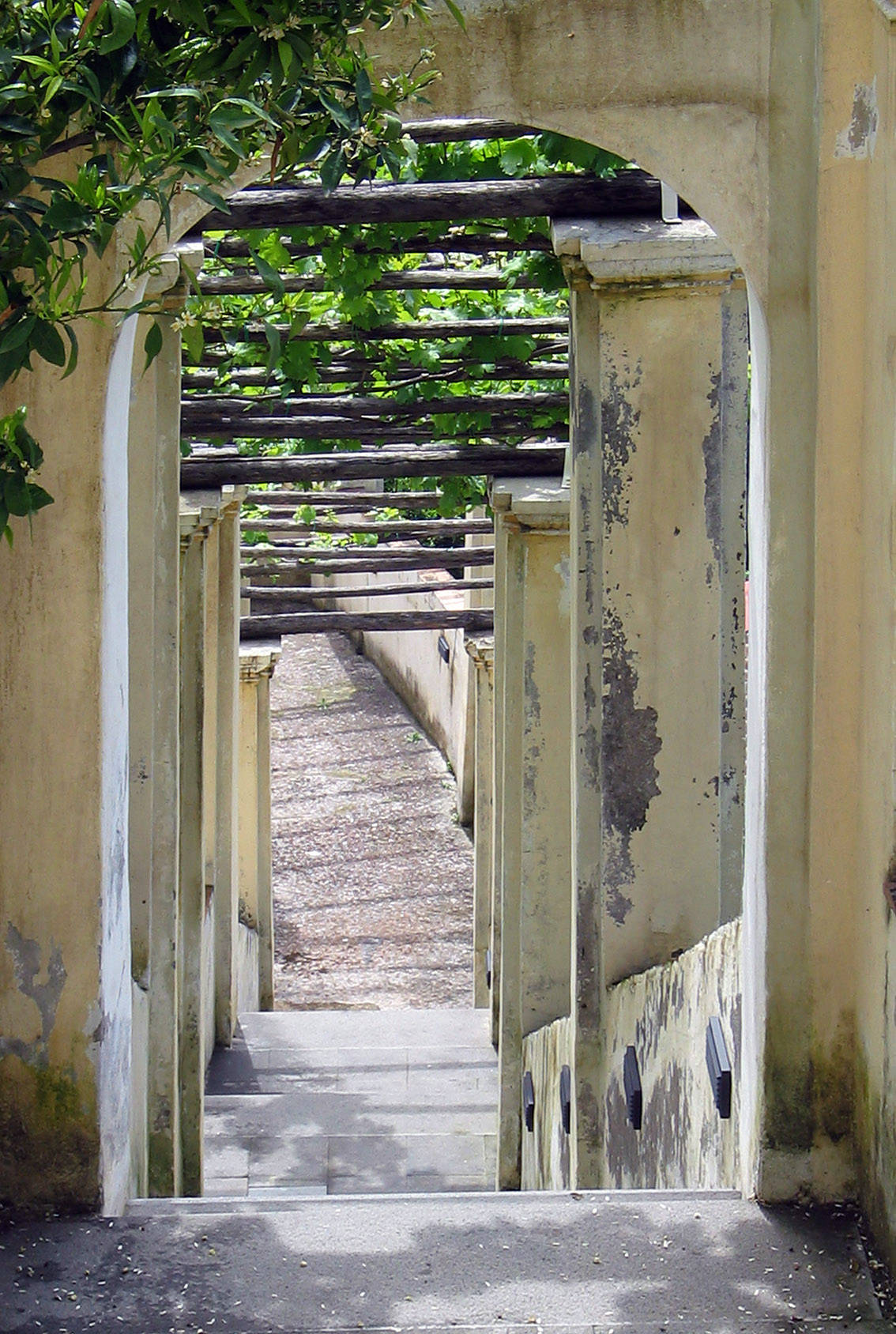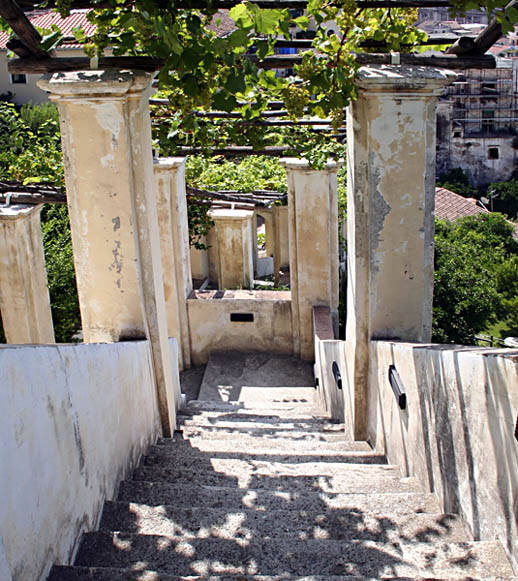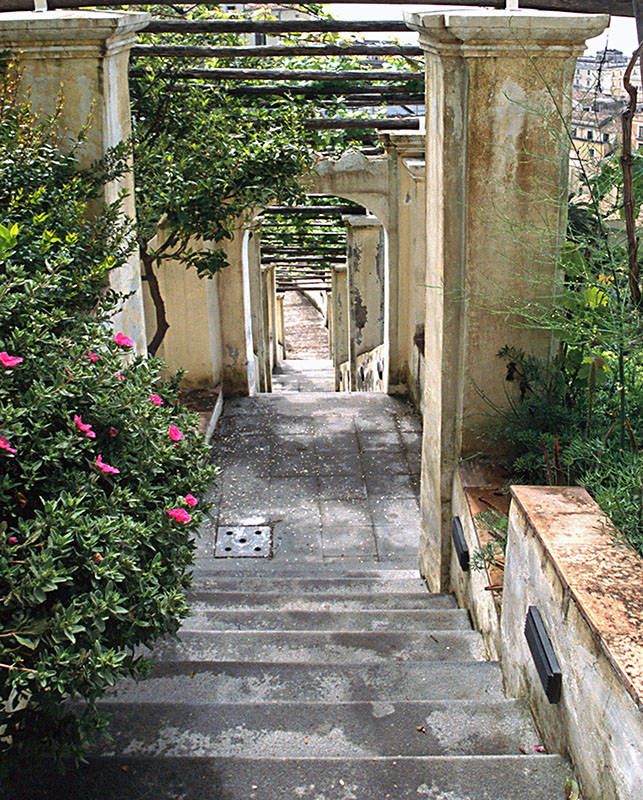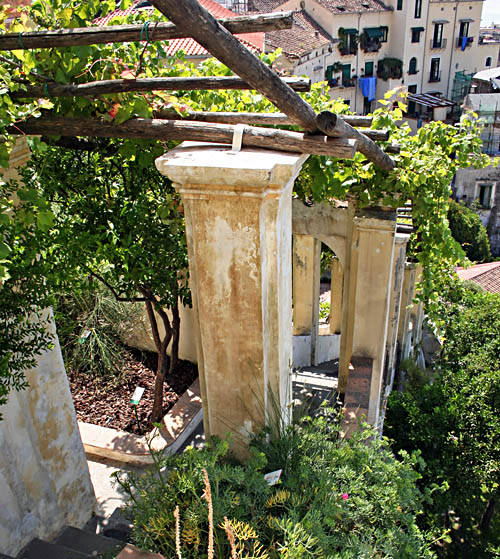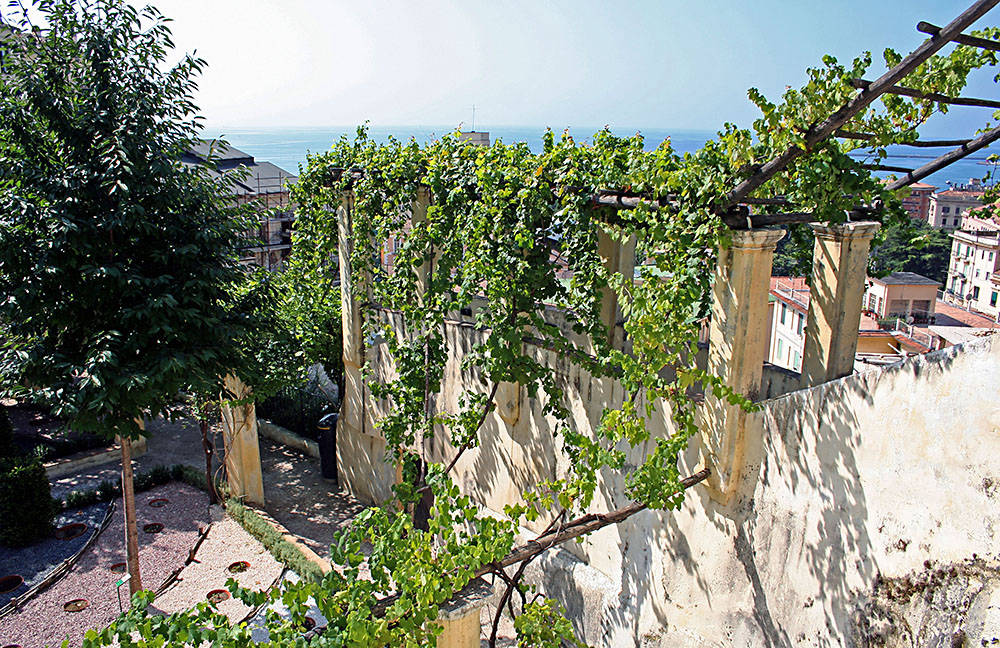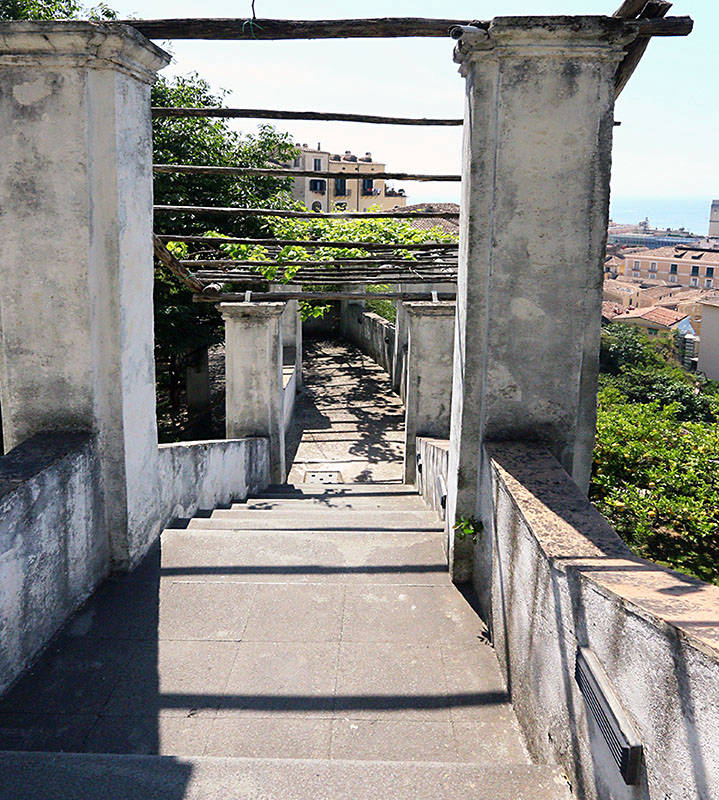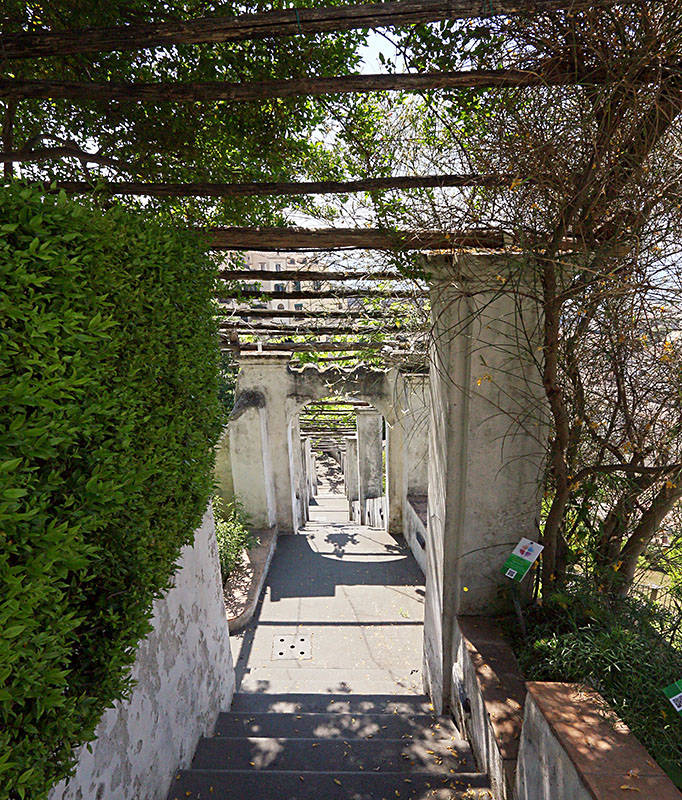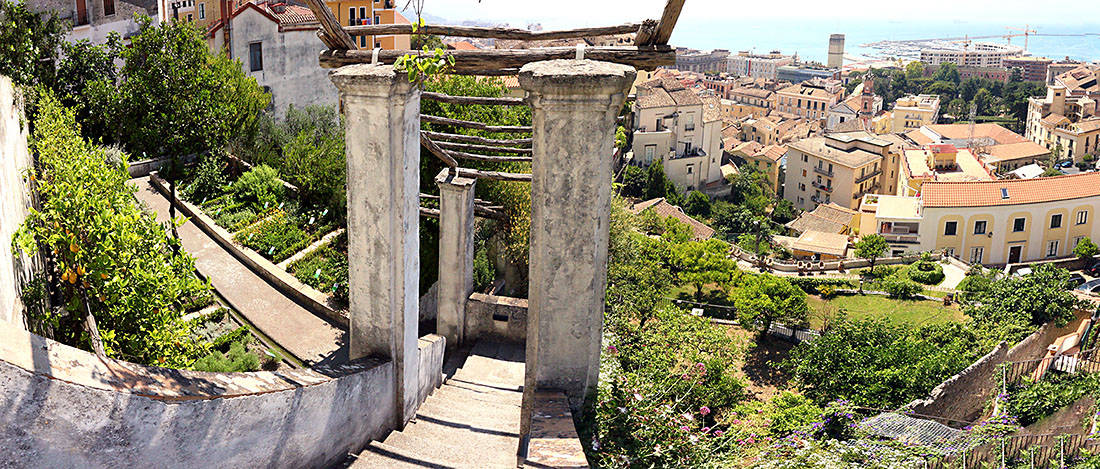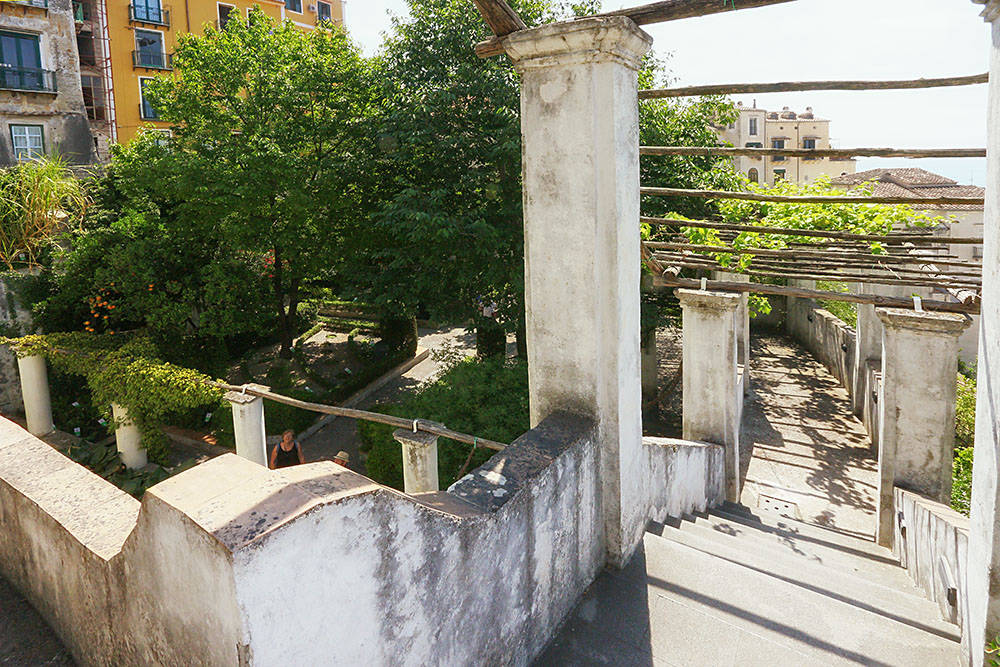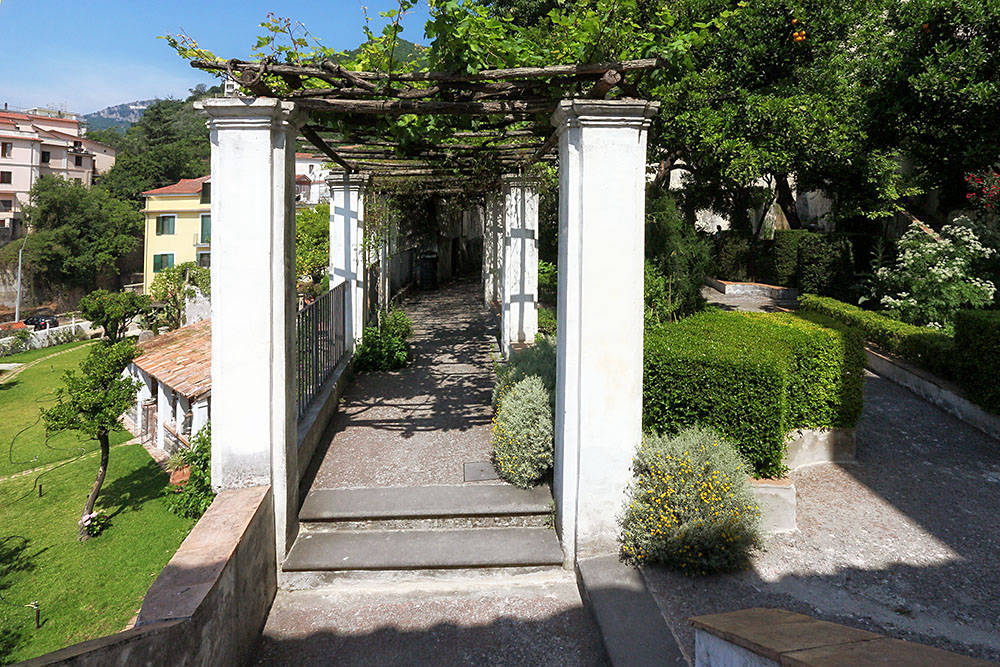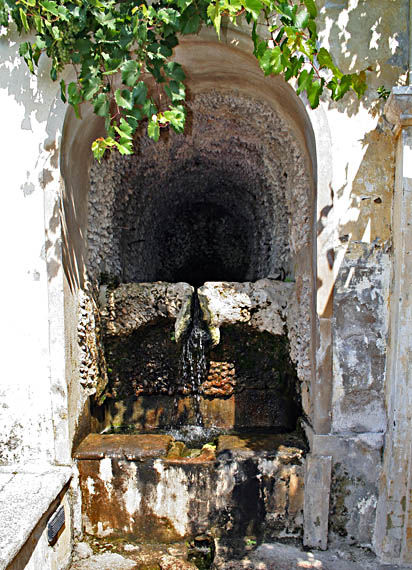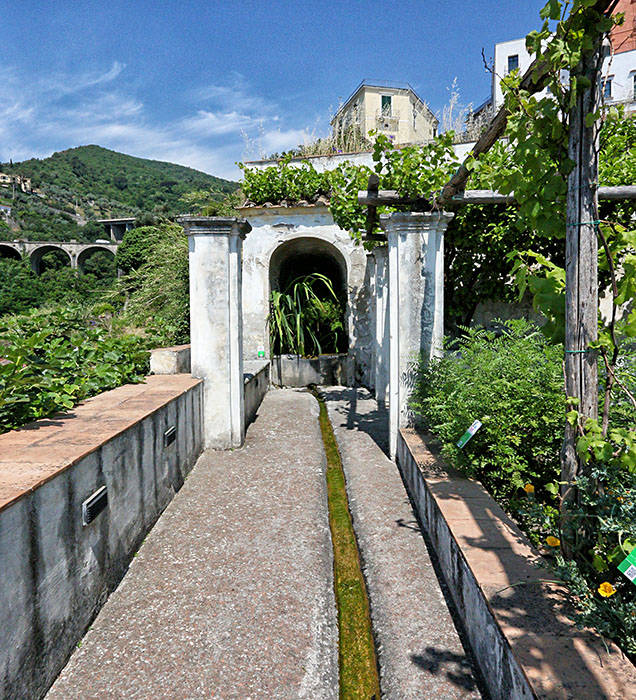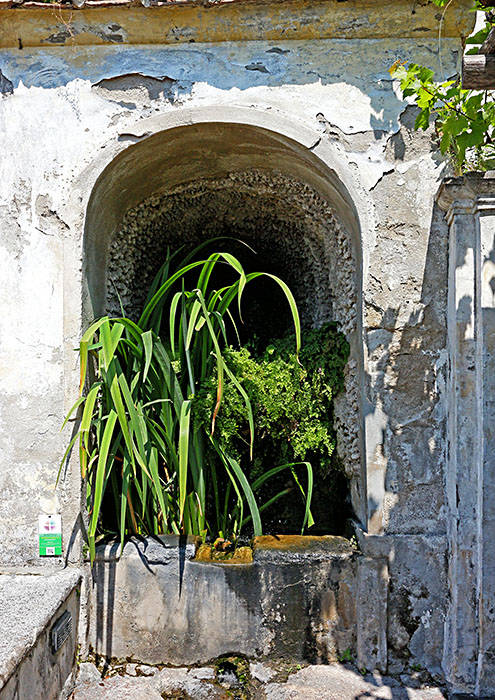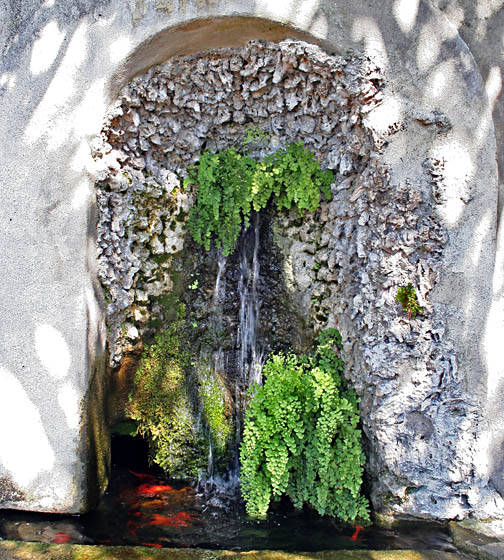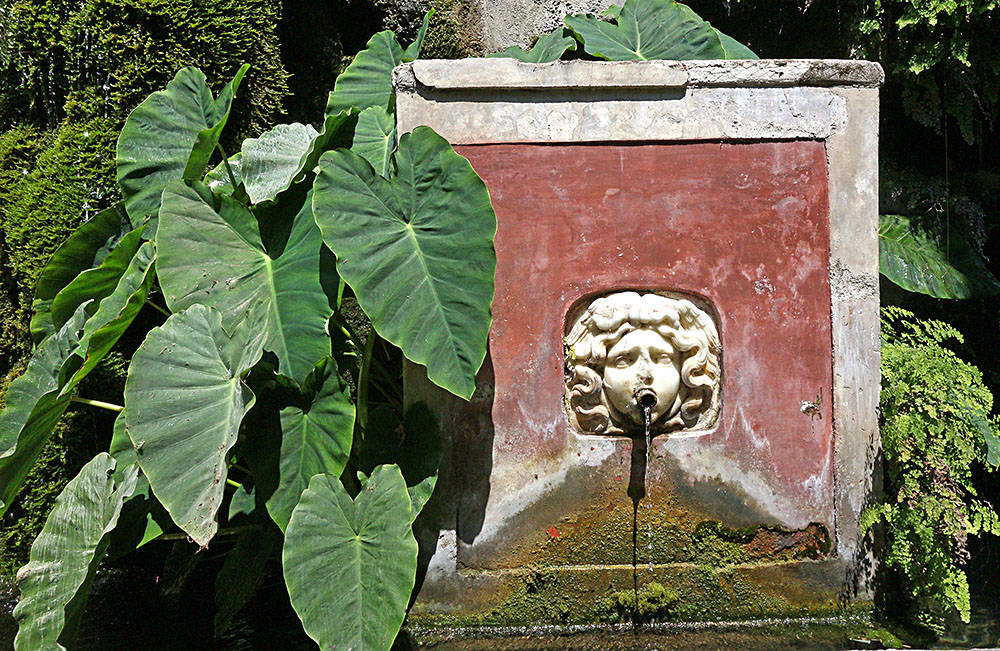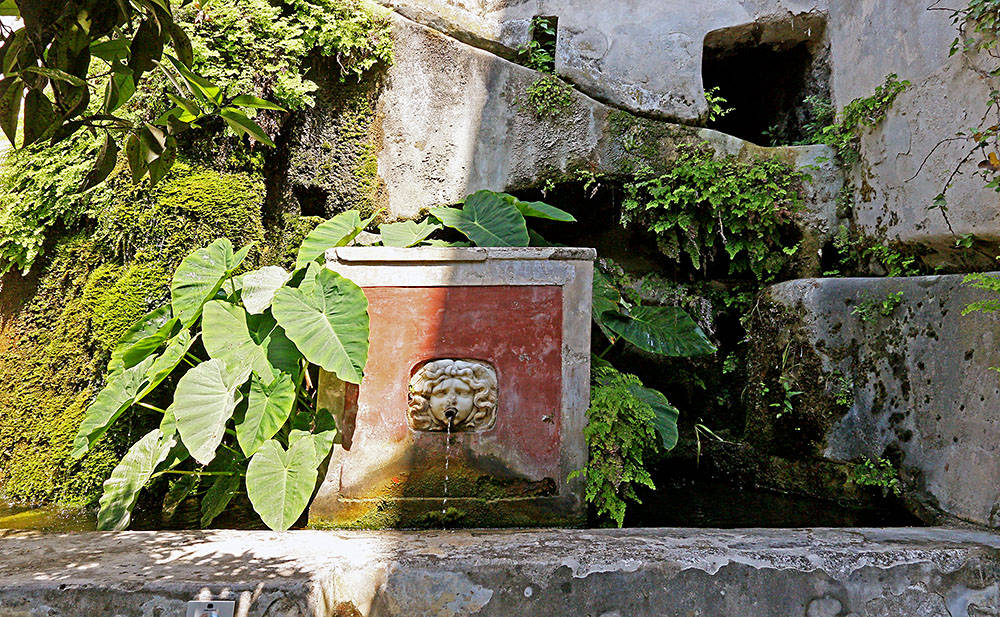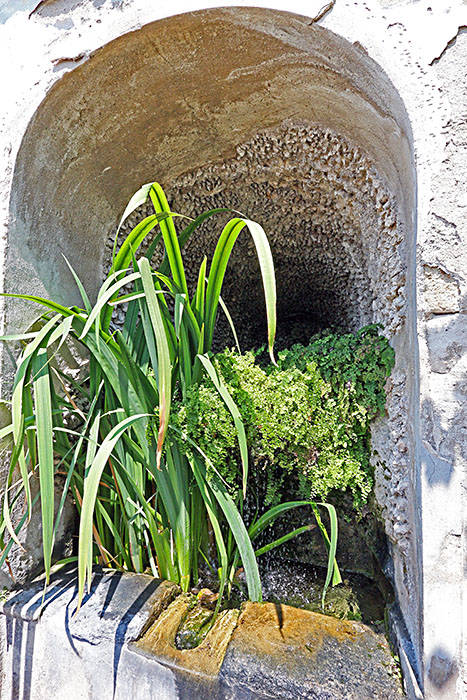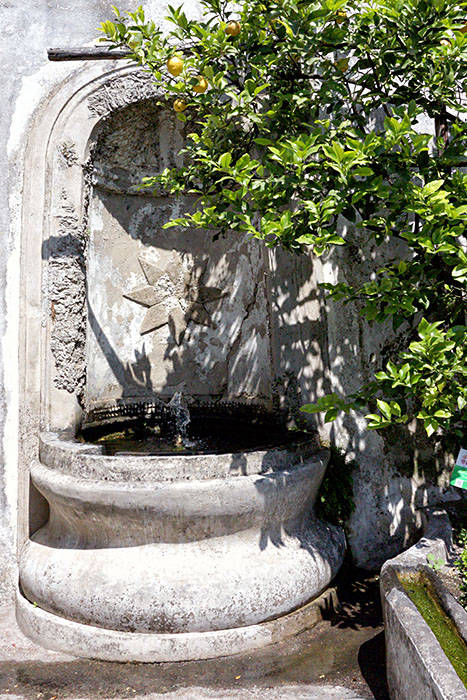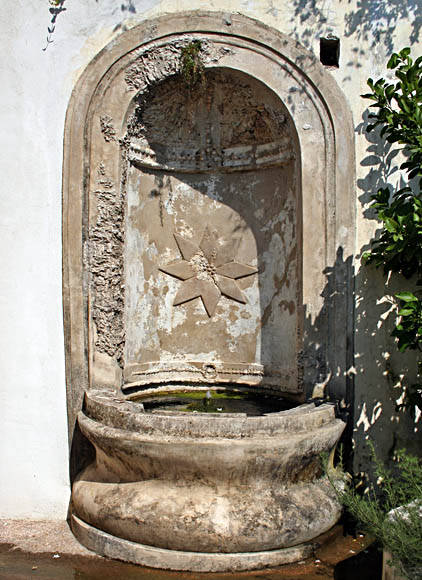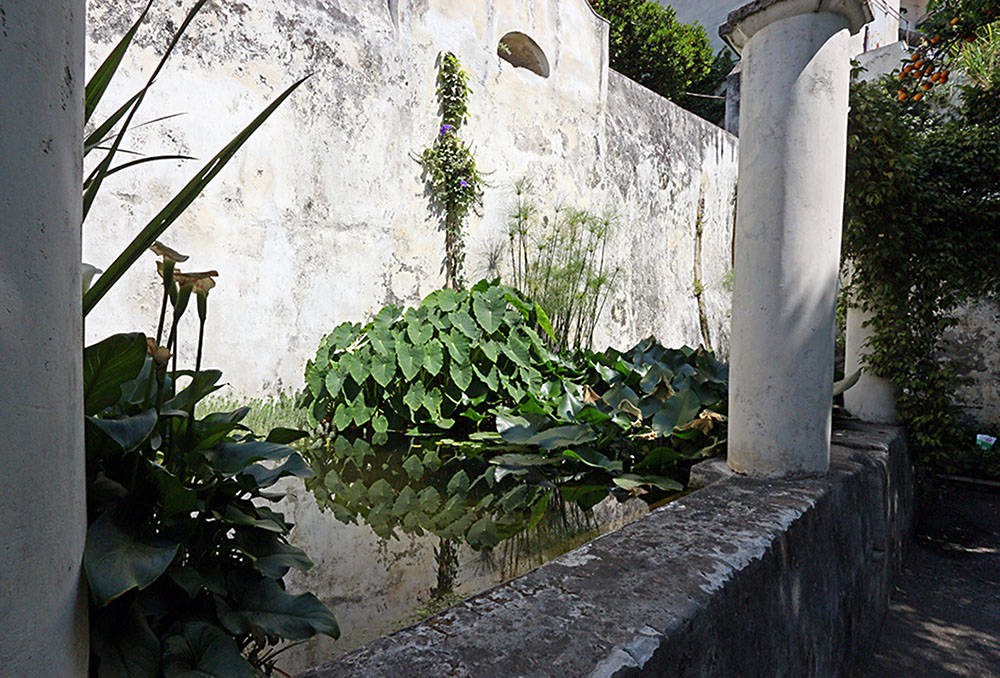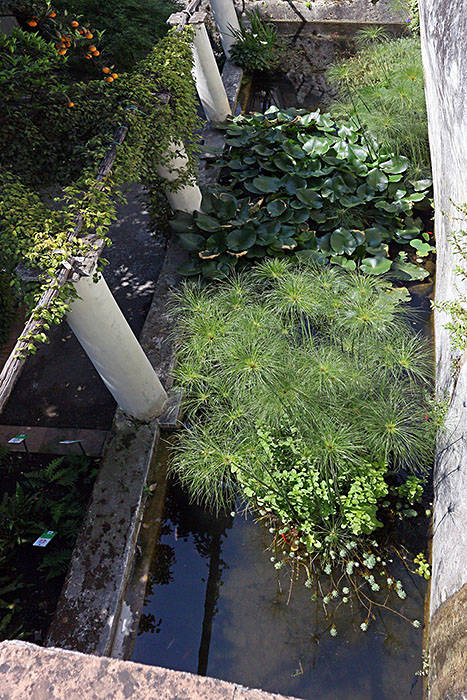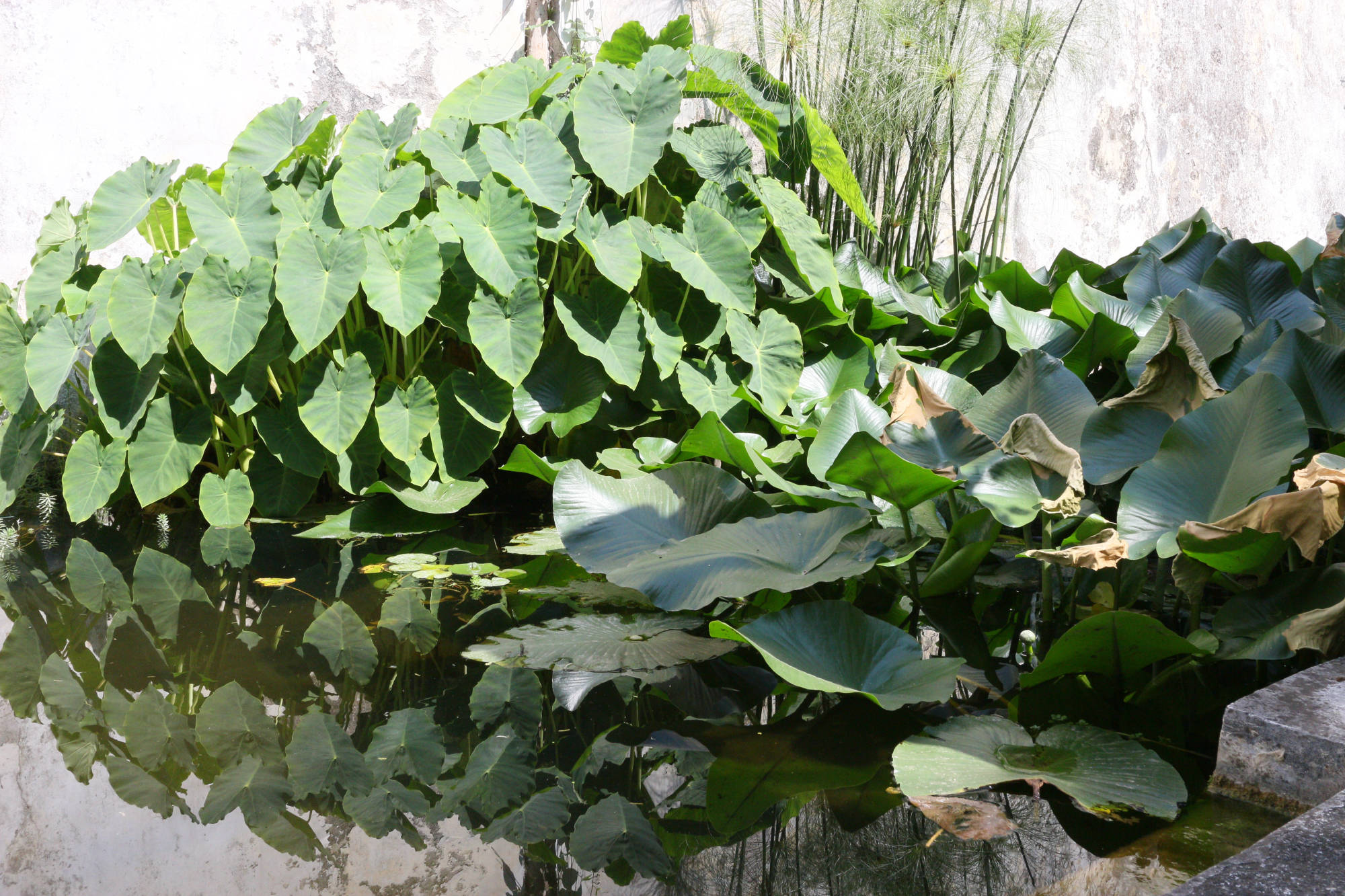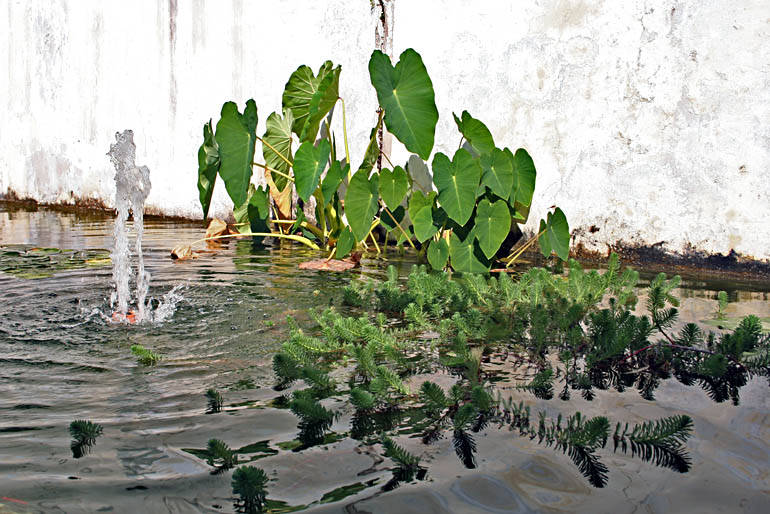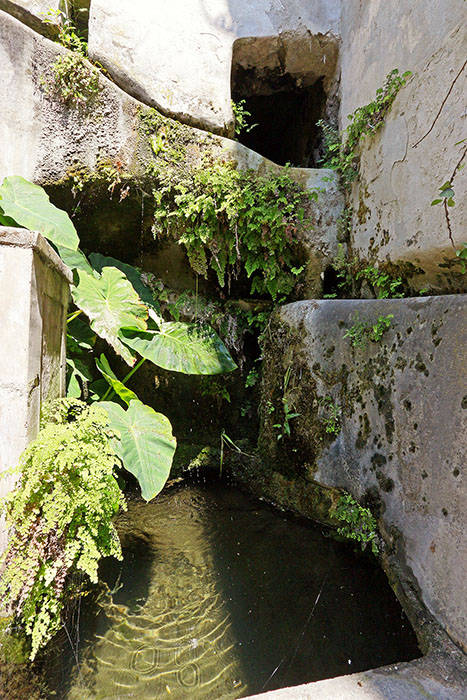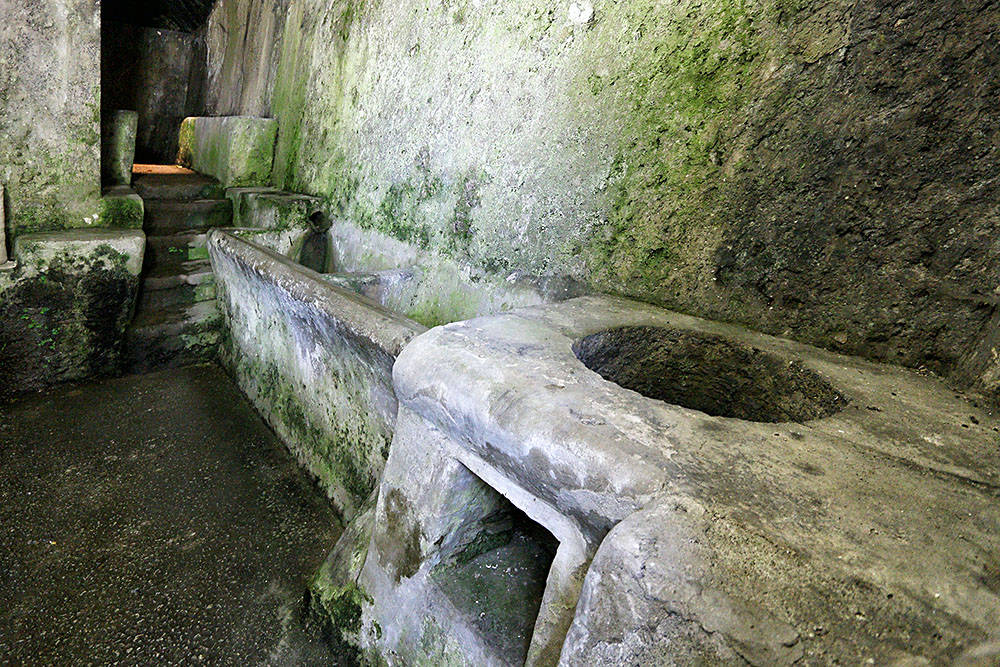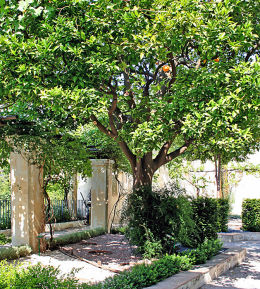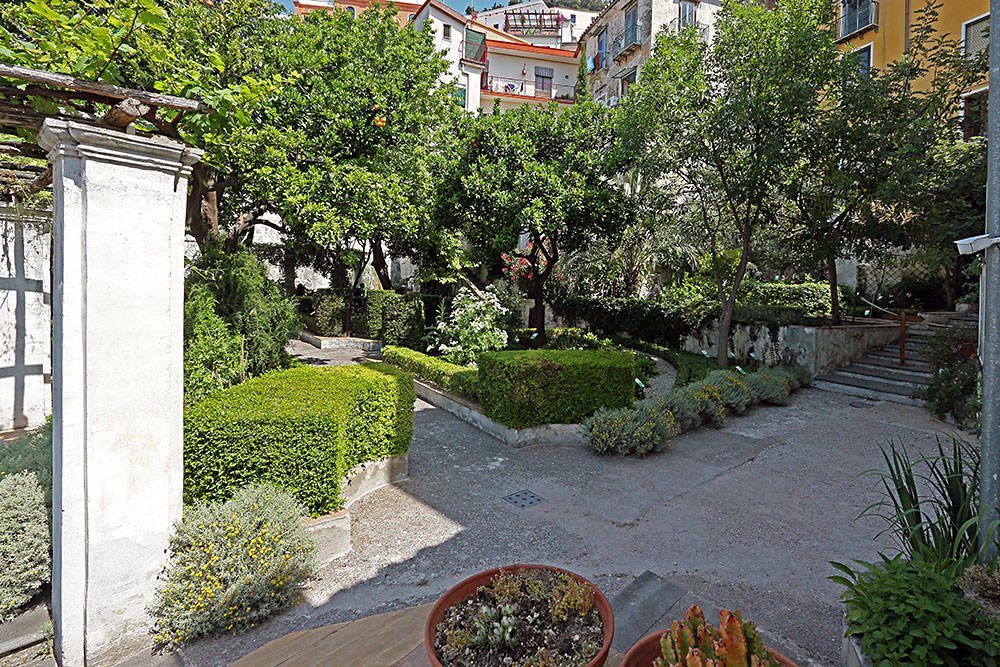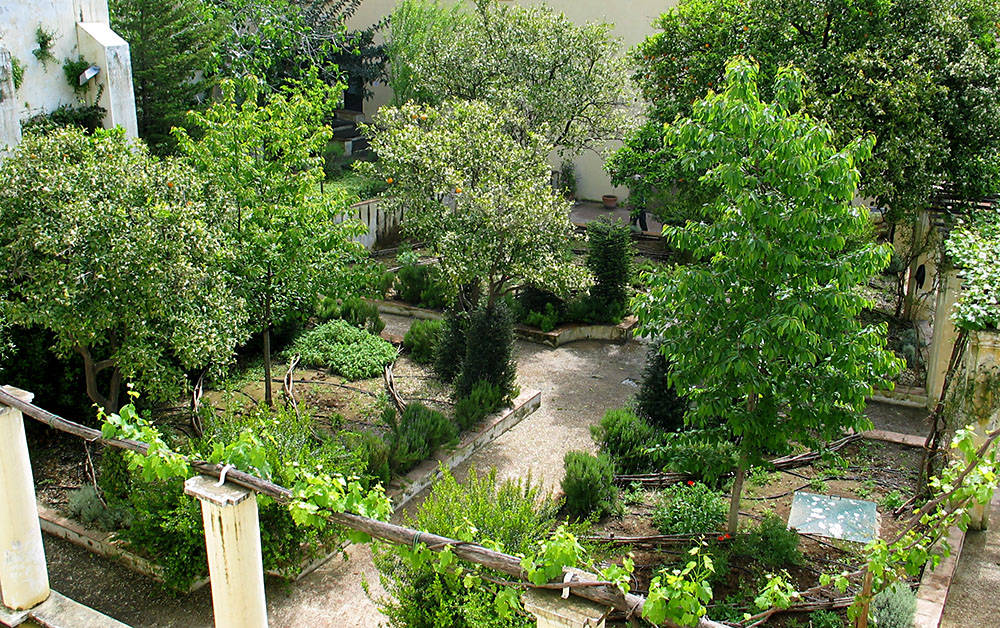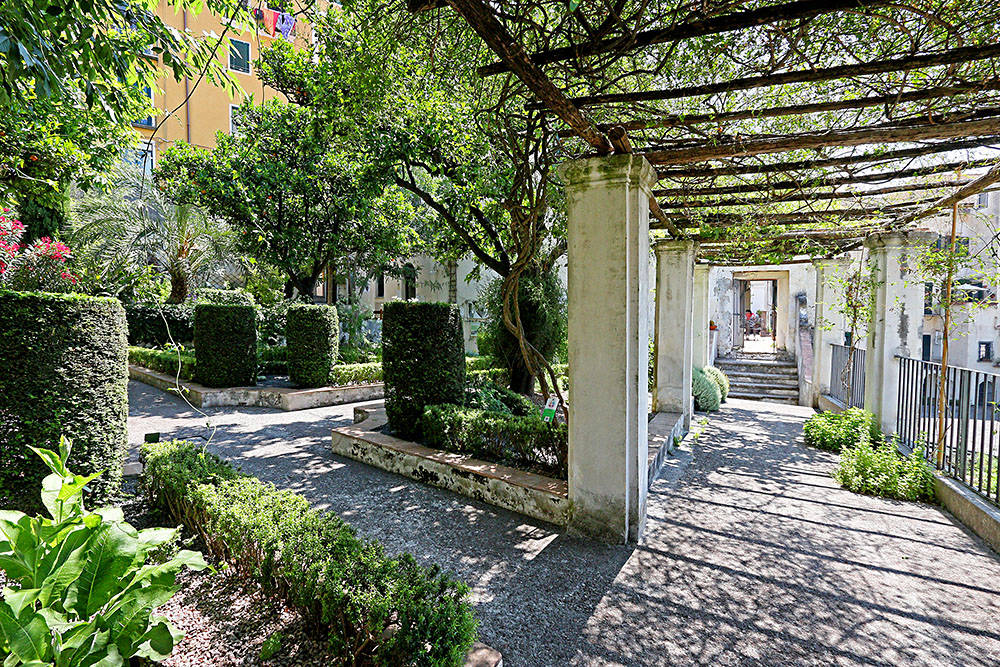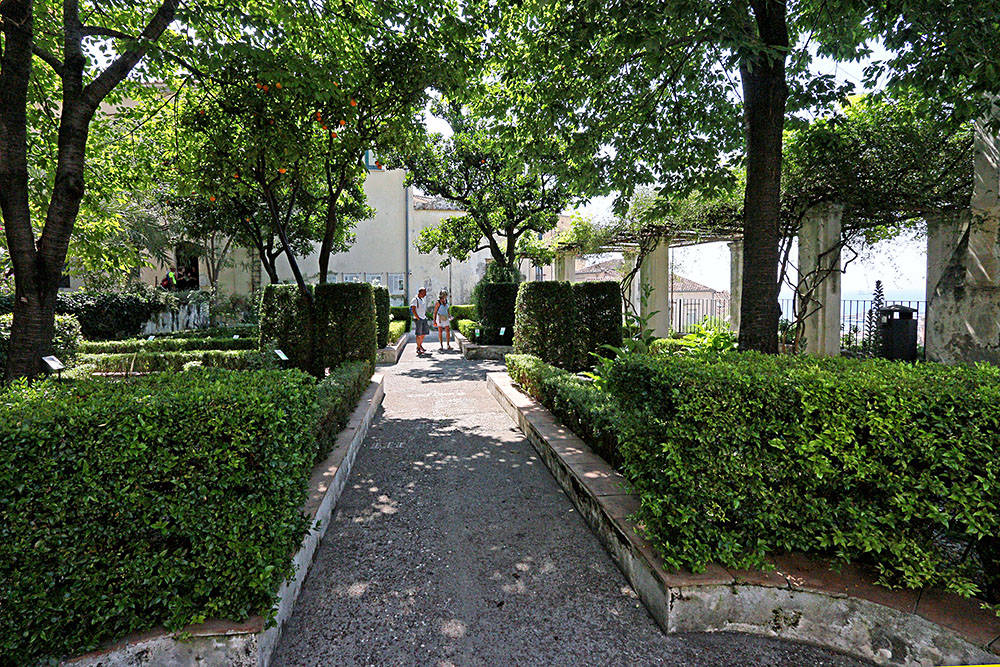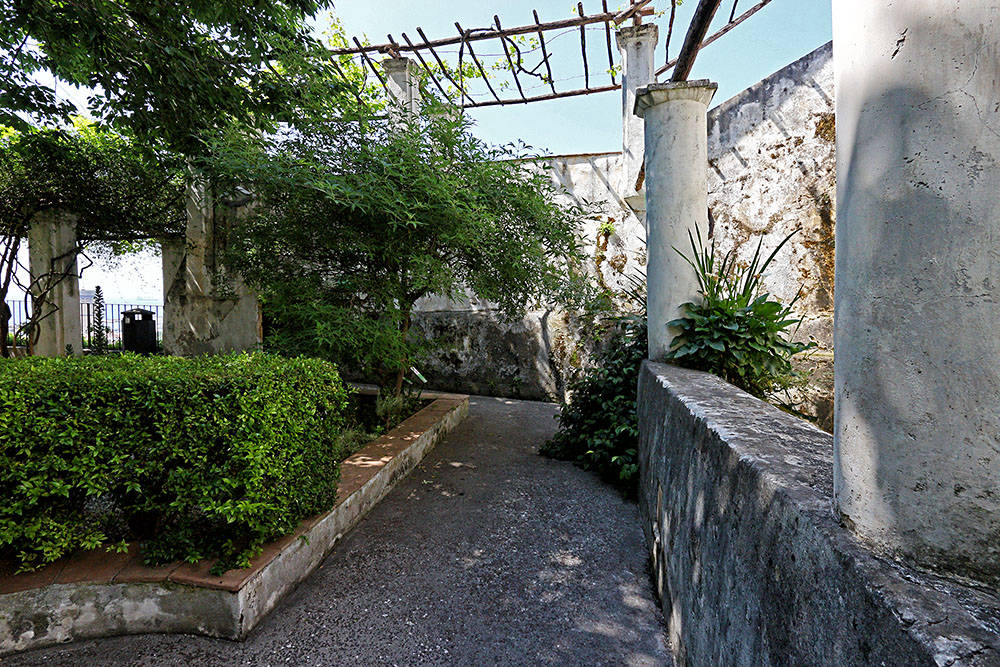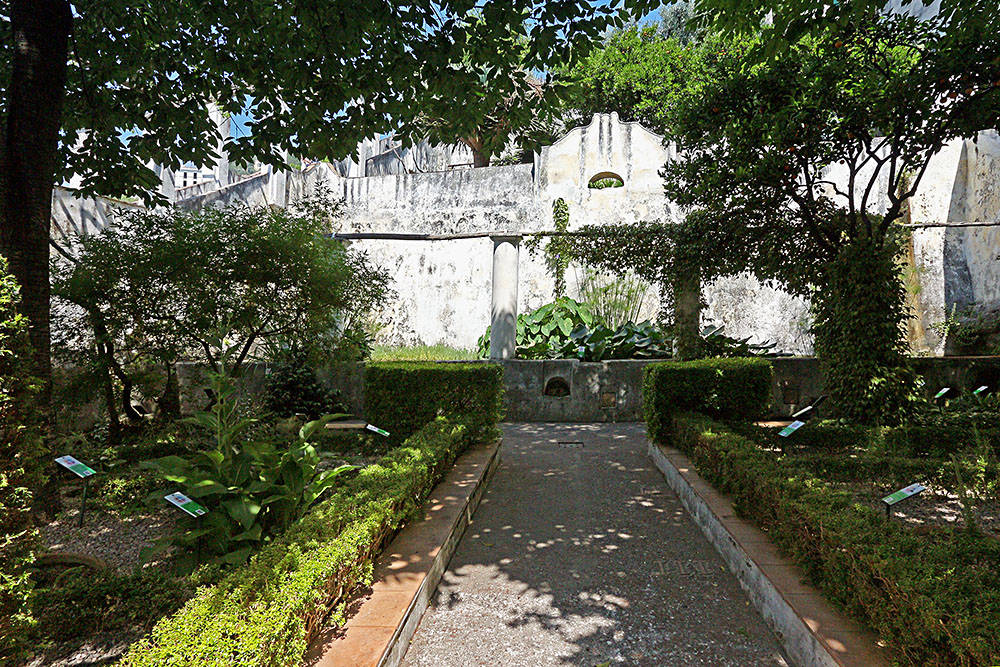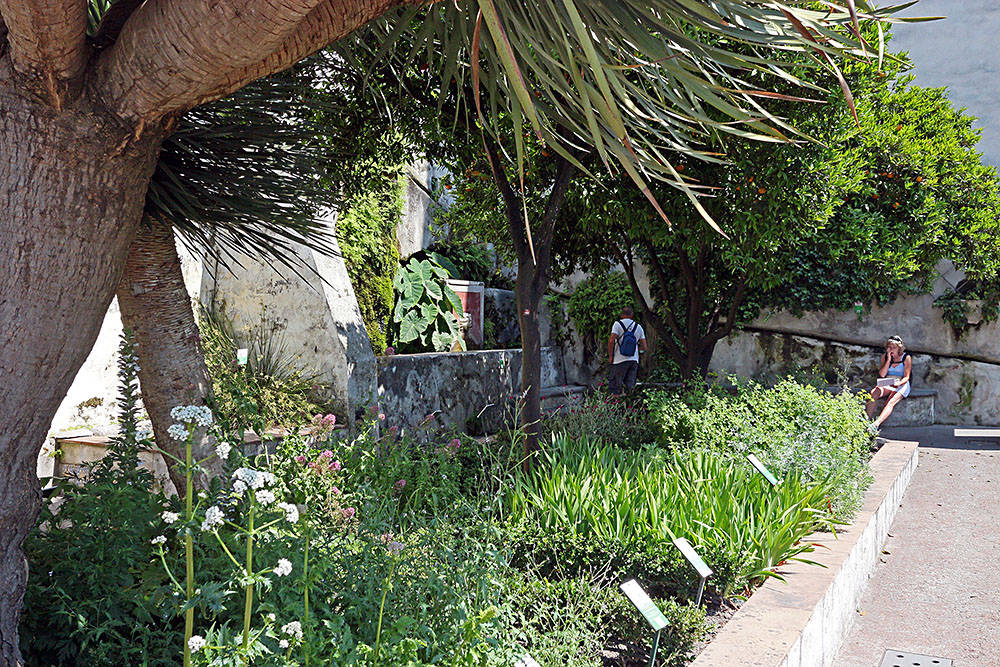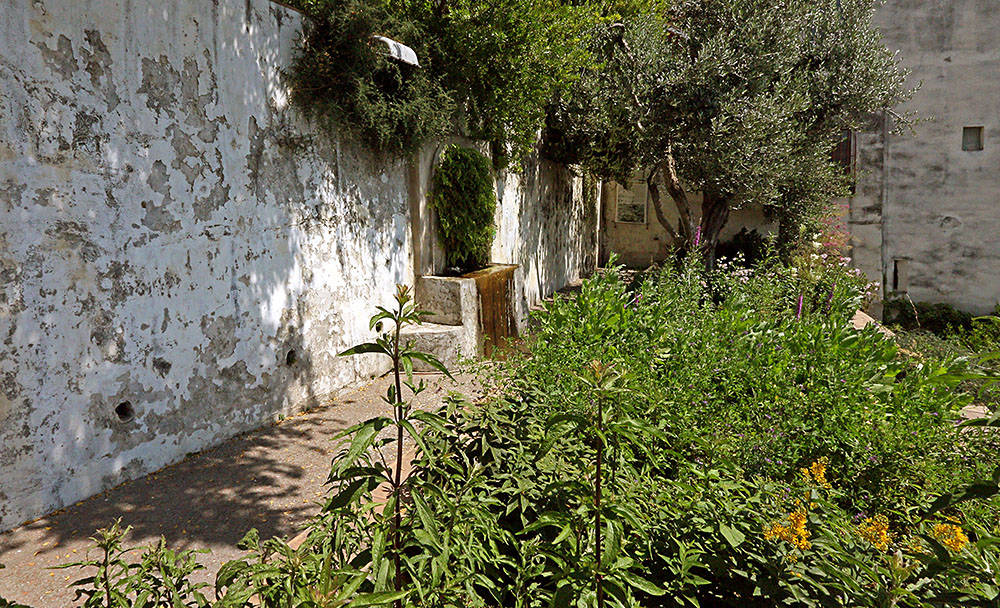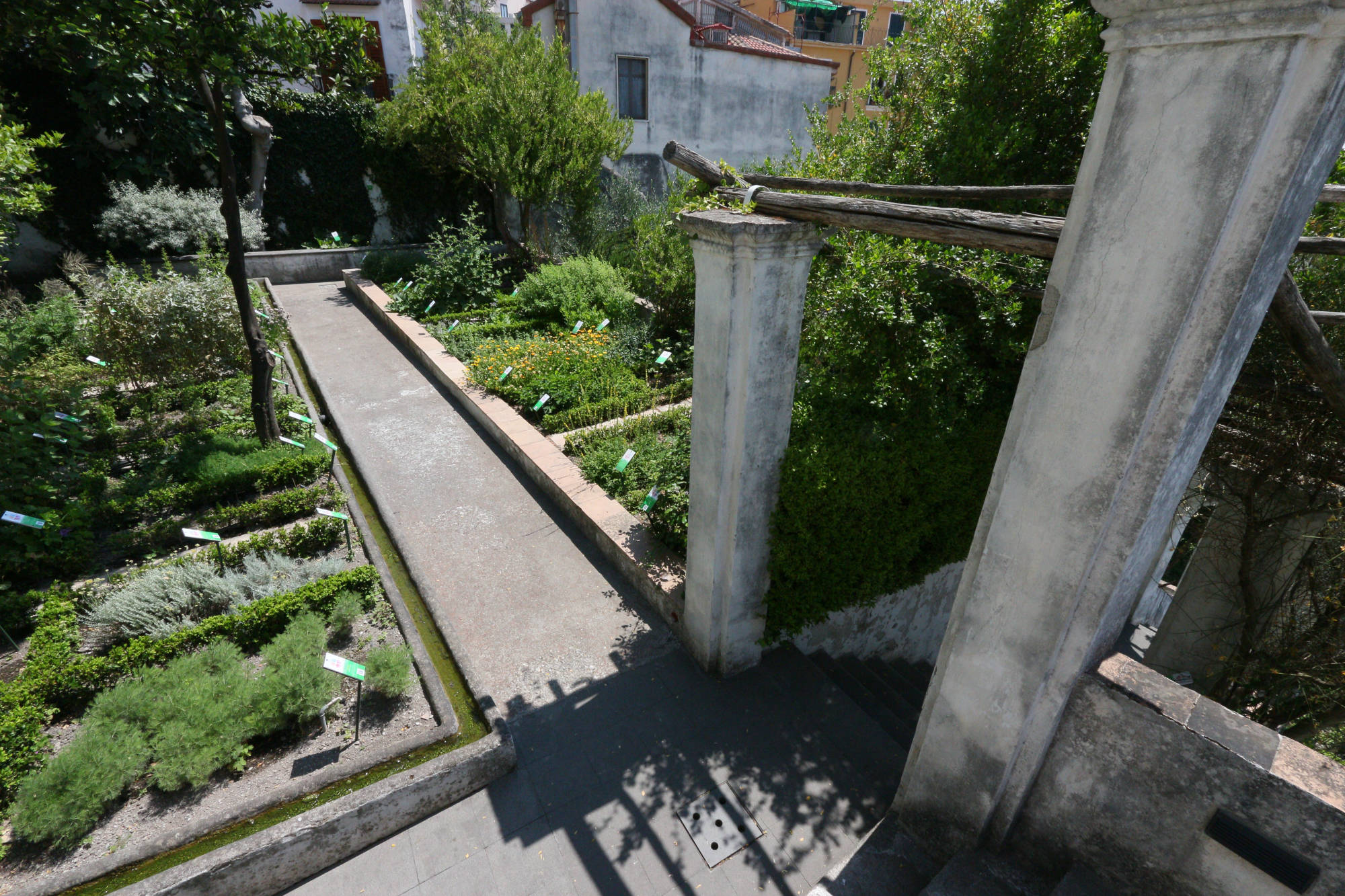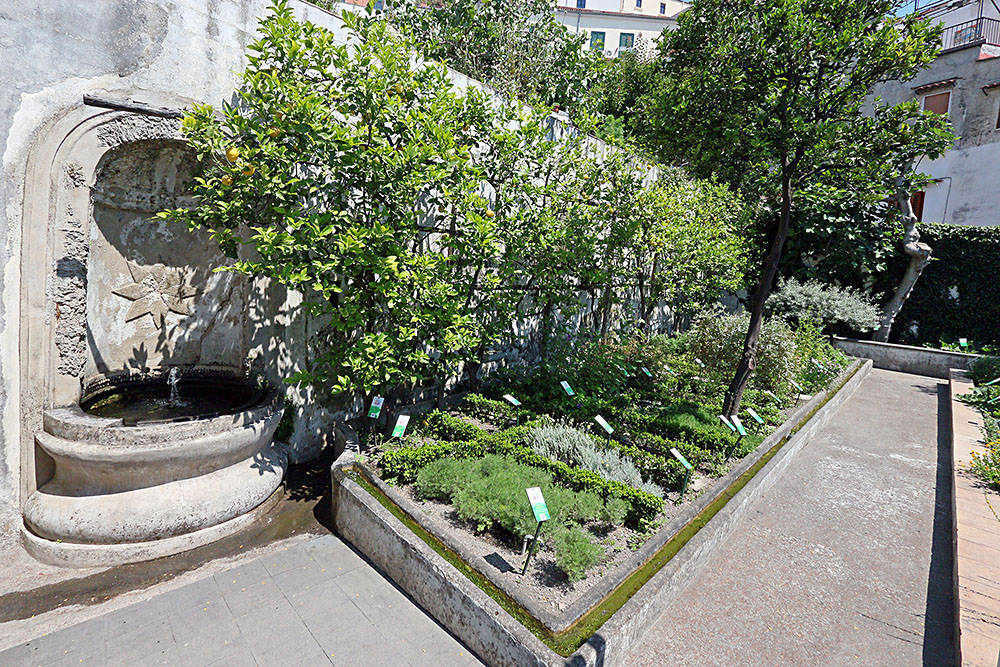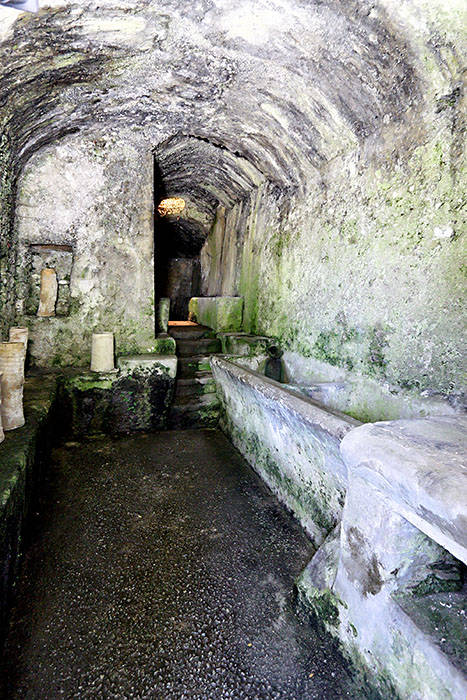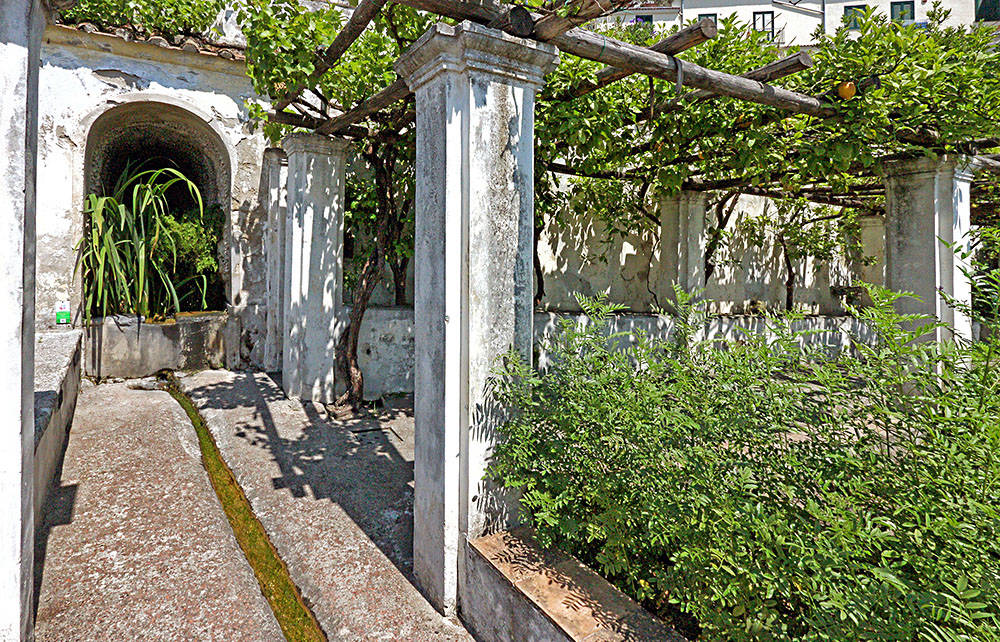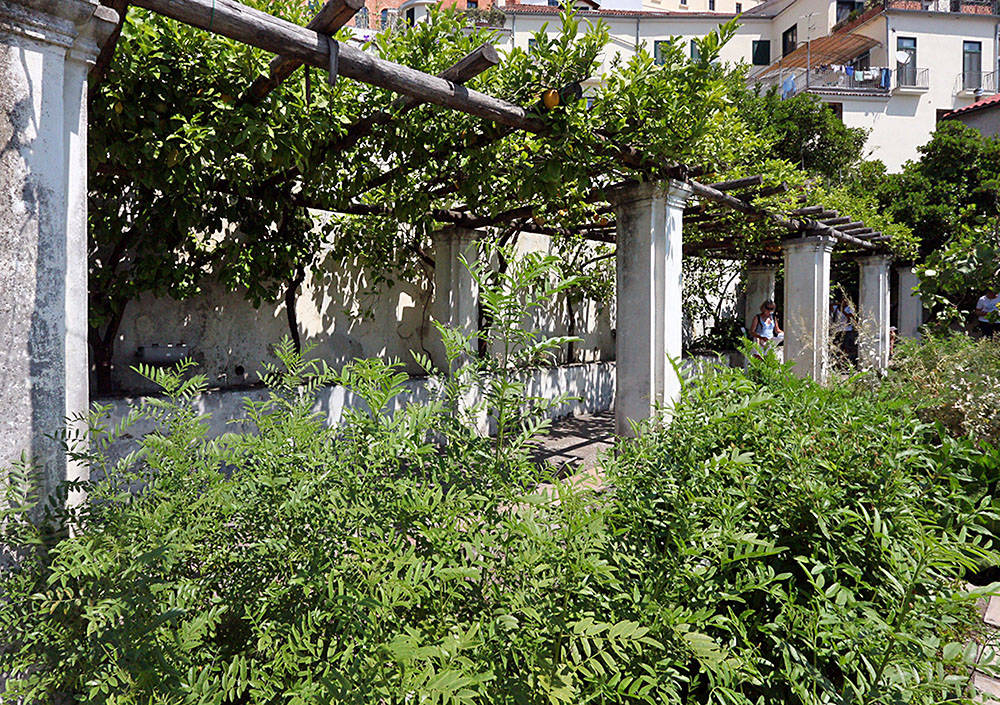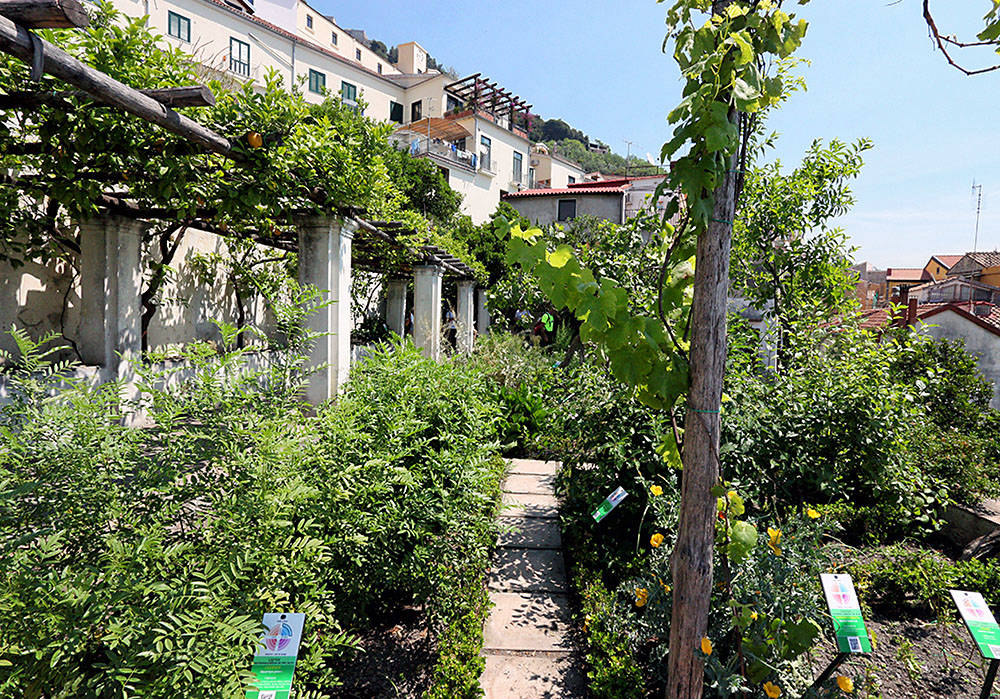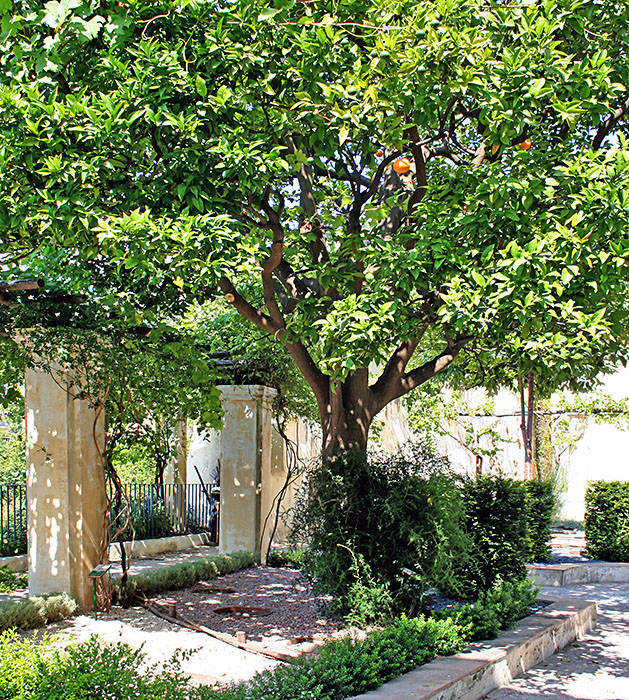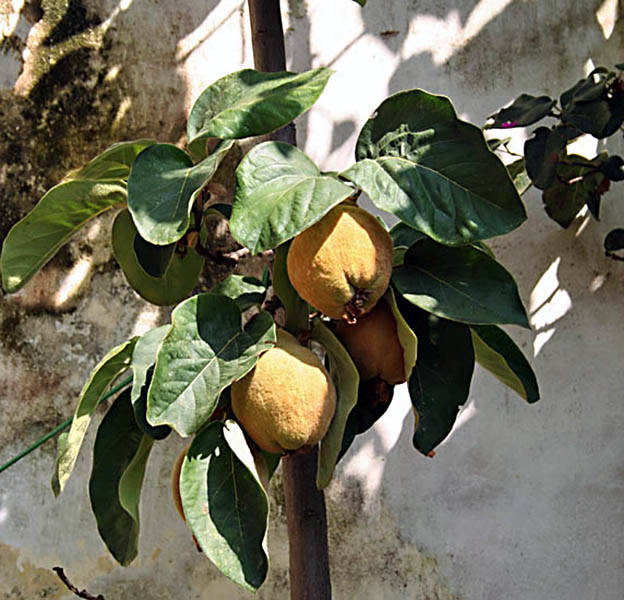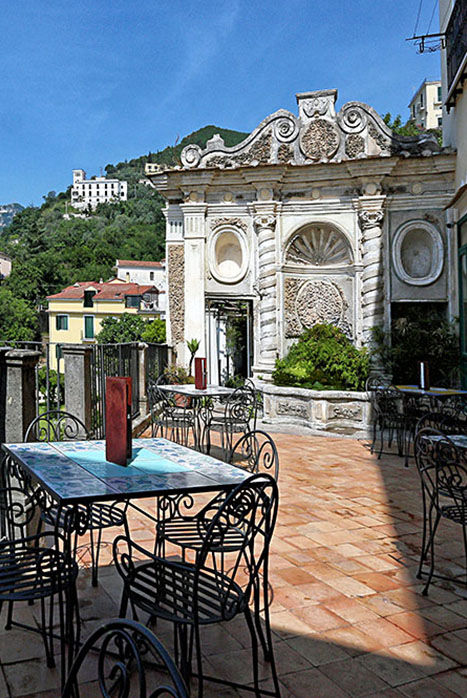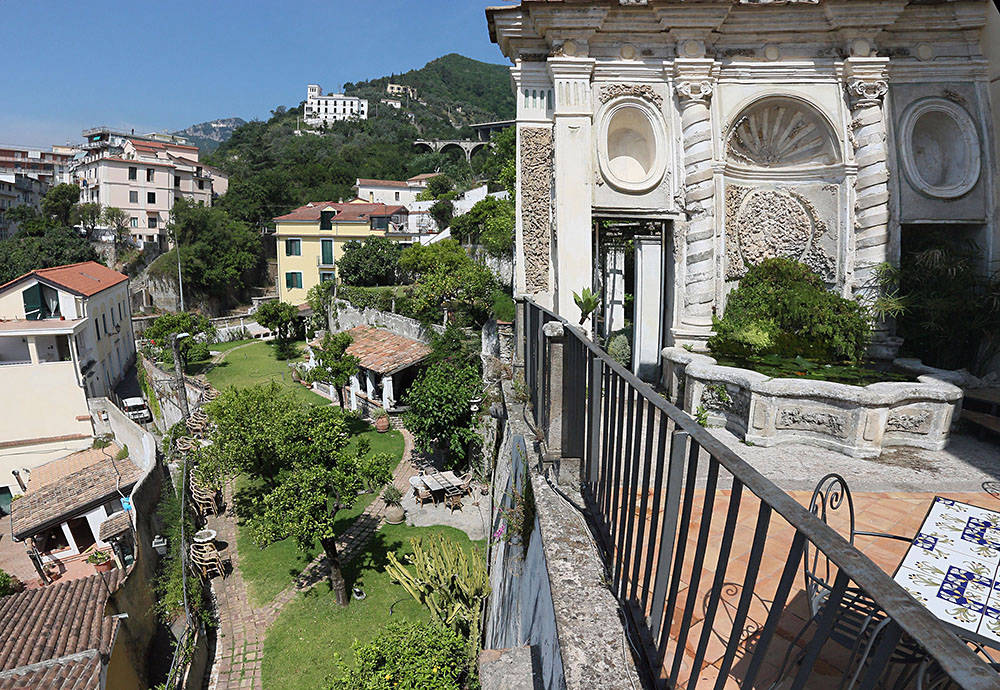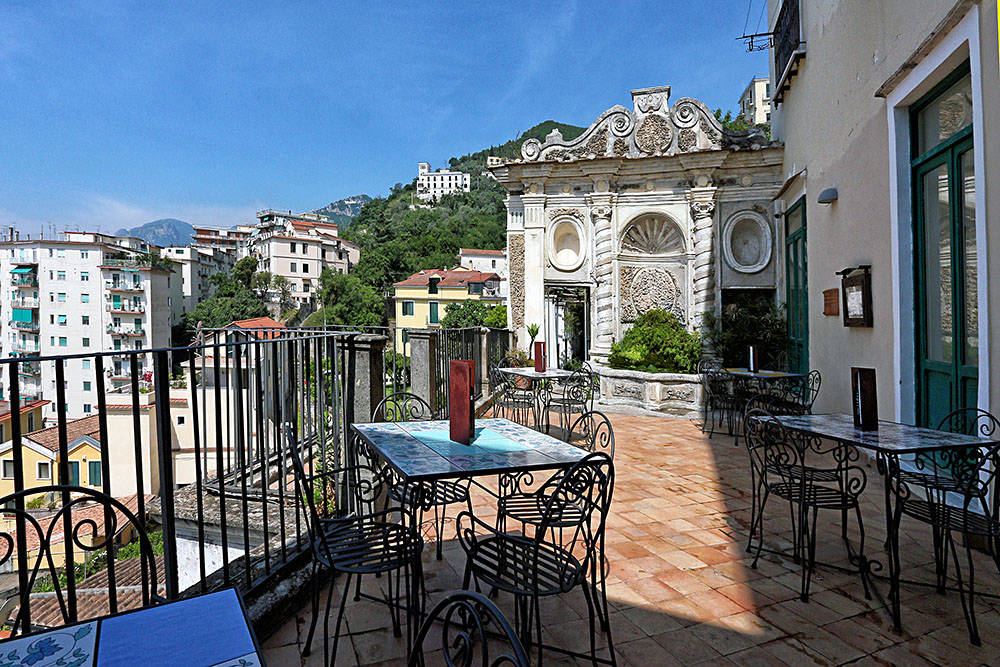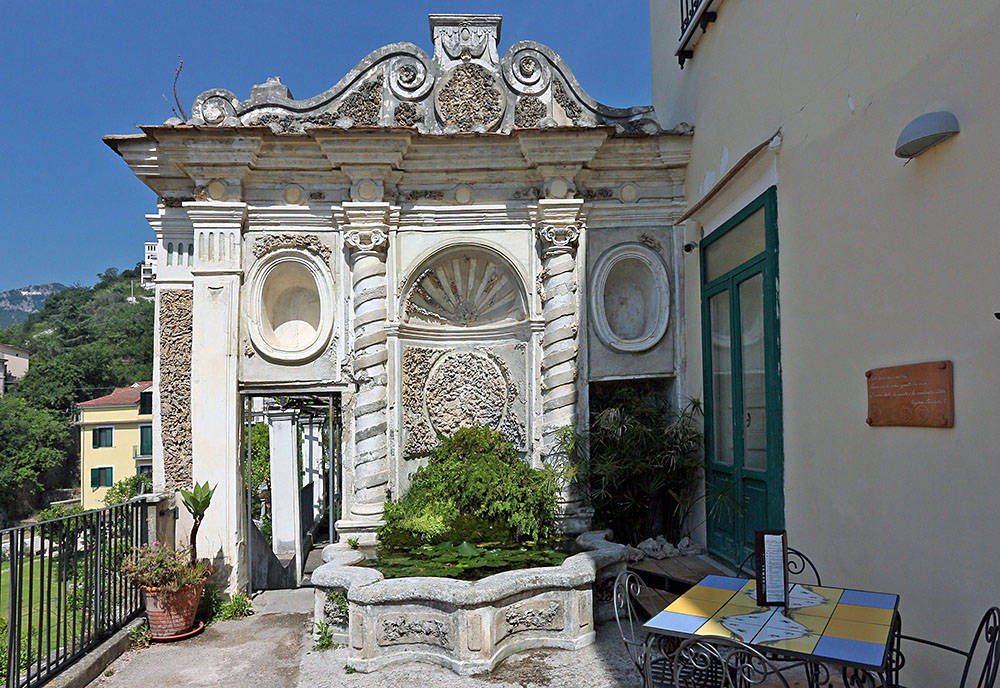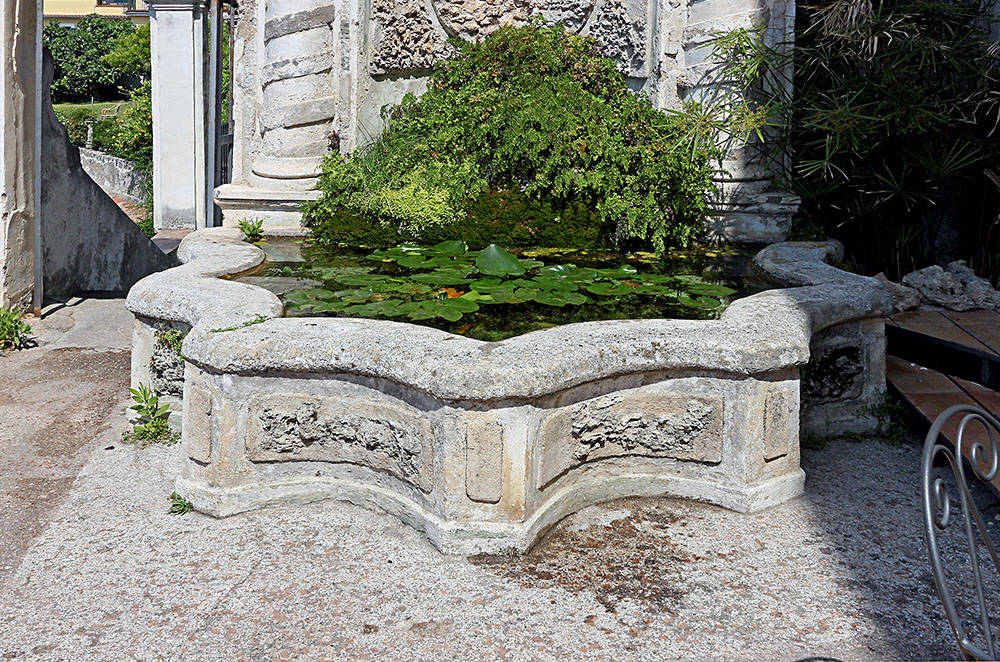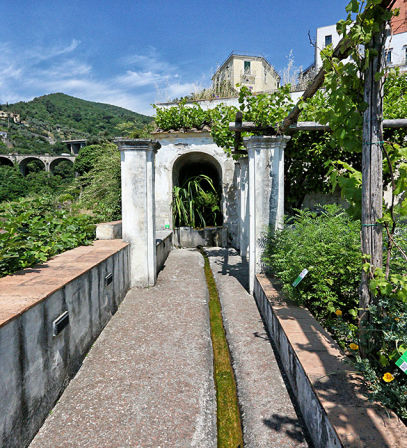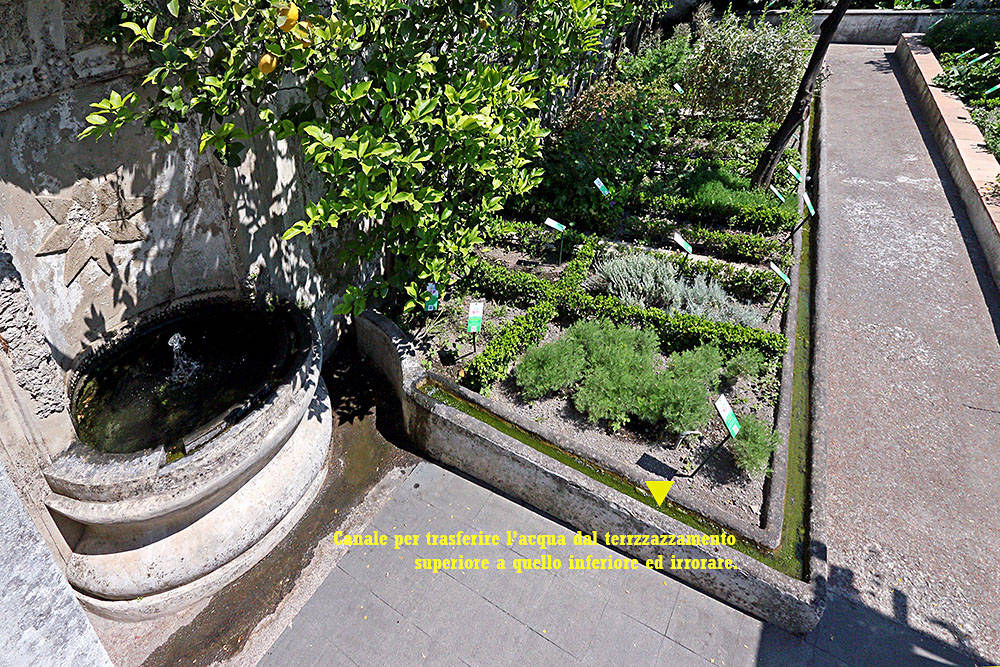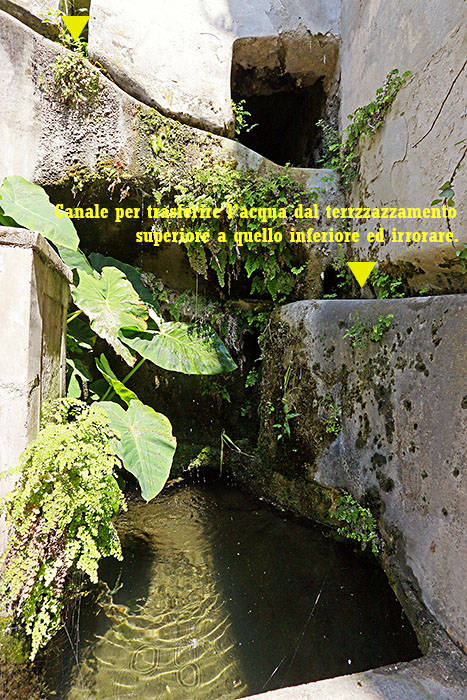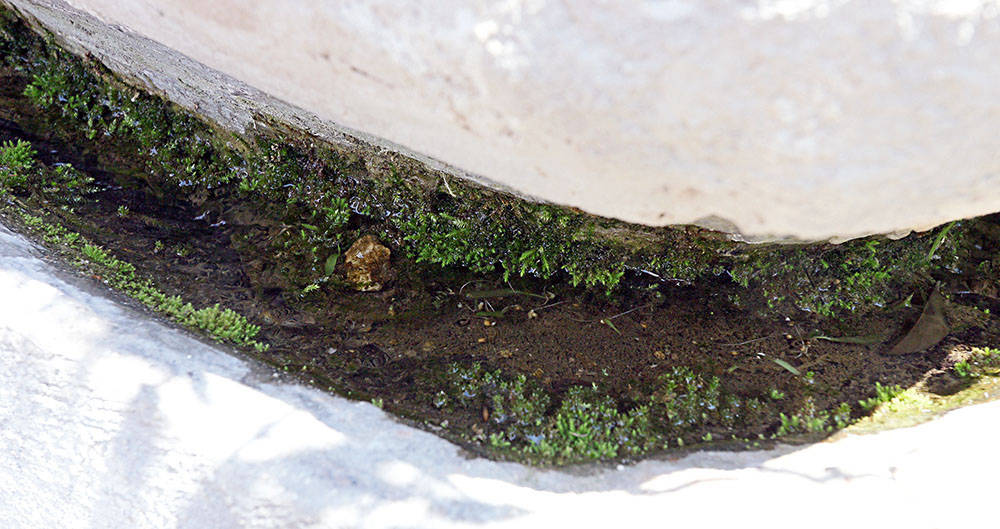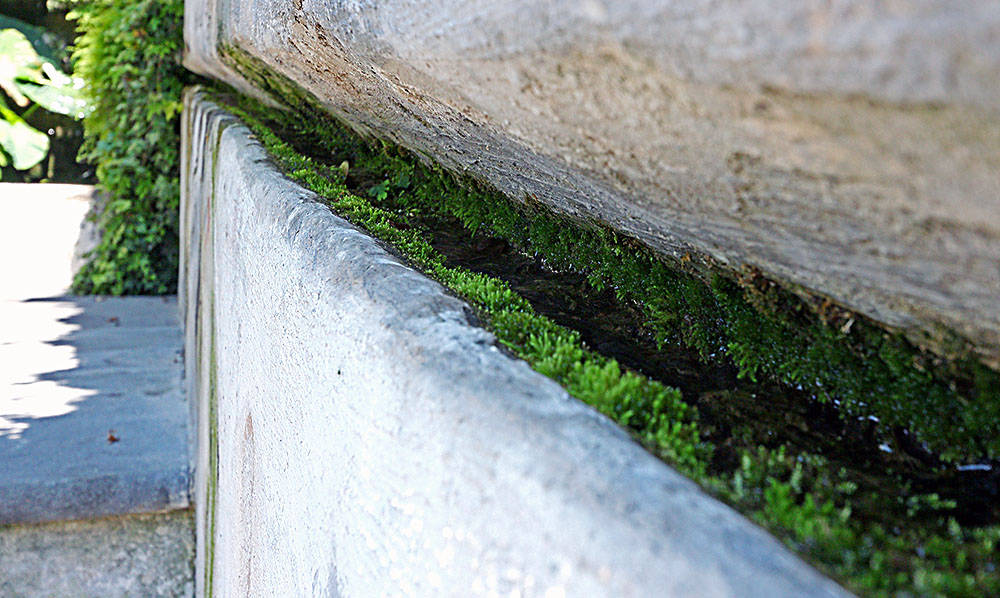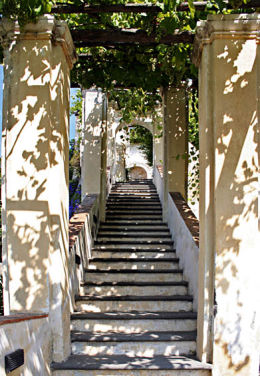
Salerno - Il giardino ( orto botanico ) della Minerva scalinata.
La scala, che collega i diversi livelli del giardino è costruita sulle mura antiche della città e permette un’ampia e privilegiata visione del mare. L’elemento forse più pregevole dei giardini è la scalea del Seicento, costruita sulle mura antiche, retta da pilastri a pianta quadrata con semplici decorazioni in stucco. La scala, posta nel versante più esterno del giardino, congiunge i vari terrazzamenti, conducendo ad un belvedere pergolato dal quale si può ammirare la visione del porto e del centro storico di Salerno e della costa Amalfitana. La scala con pilastri e decorazioni in stucco che sorreggono la pergola, collega i diversi livelli del giardino per finire in un terrazzo belvedere. La scala con pilastri e decorazioni in stucco che sorreggono la pergola, collega i diversi livelli del giardino per finire in un terrazzo belvedere. Al termine dei lavori di restauro, ascrivibili tra il XVII ed il XVIII secolo, la lunga scala sottolineata da pilastri a pianta cruciforme sorreggono una pergola di legno.
The garden ( botanical garden ) of the Minerva stairway.
The staircase, which connects the different levels of the garden, is built on the ancient walls of the city and allows a wide and privileged view of the sea. Perhaps the most valuable element of the gardens is the seventeenth-century staircase, built on the ancient walls, supported by square pillars with simple stucco decorations. The staircase, located on the outermost side of the garden, connects the various terraces, leading to a pergola belvedere from which you can admire the view of the port and the historic center of Salerno and the Amalfi coast. The staircase with pillars and stucco decorations that support the pergola connects the different levels of the garden to end in a belvedere terrace. The staircase with pillars and stucco decorations that support the pergola connects the different levels of the garden to end in a belvedere terrace. At the end of the restoration work, ascribable between the 17th and 18th centuries, the long staircase highlighted by cruciform pillars support a wooden pergola.
